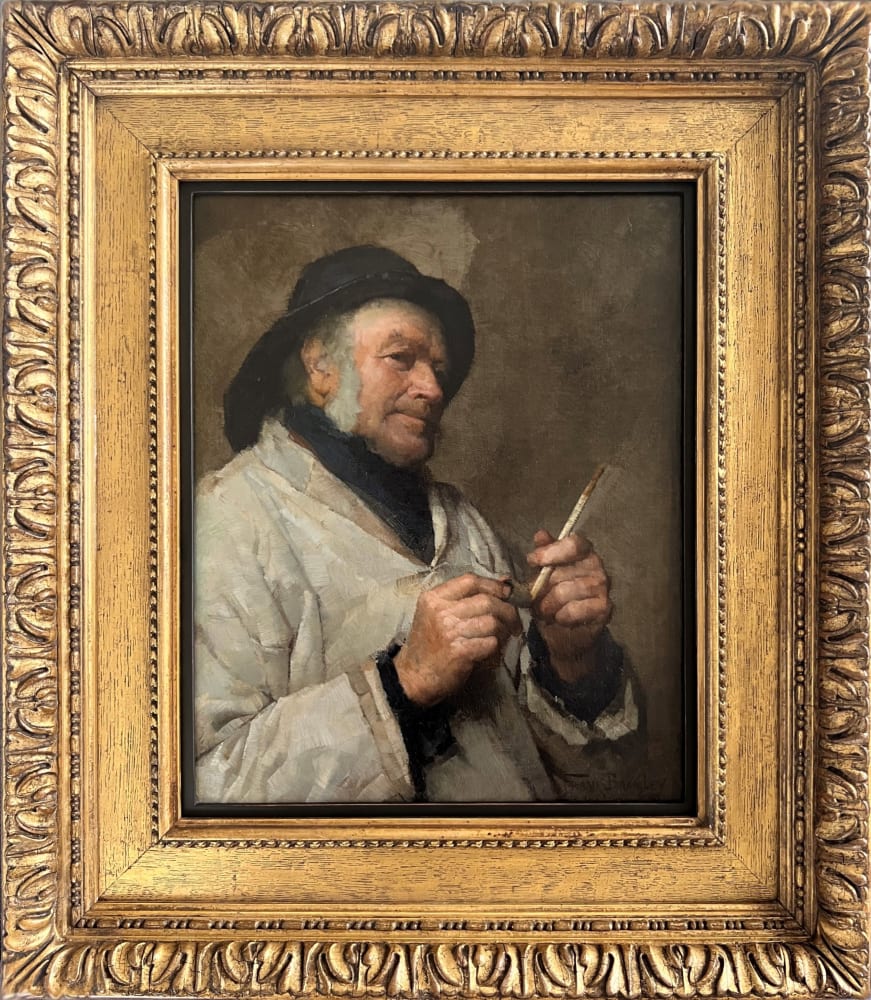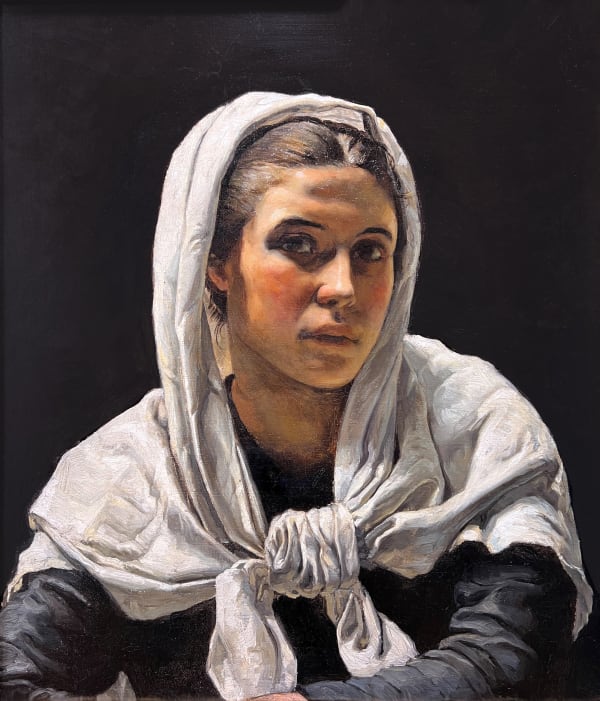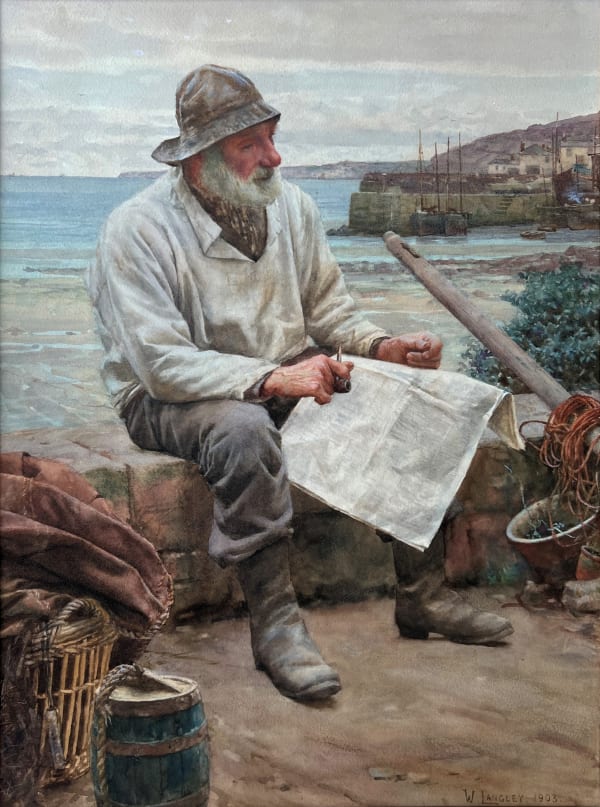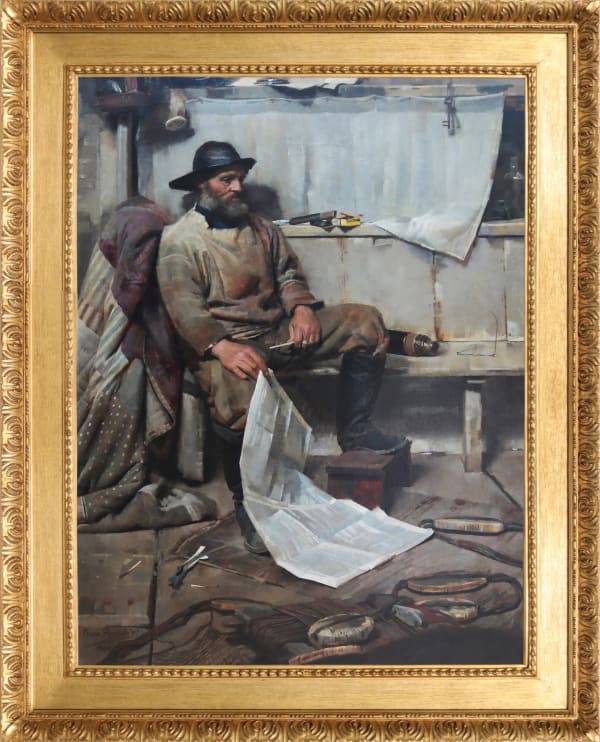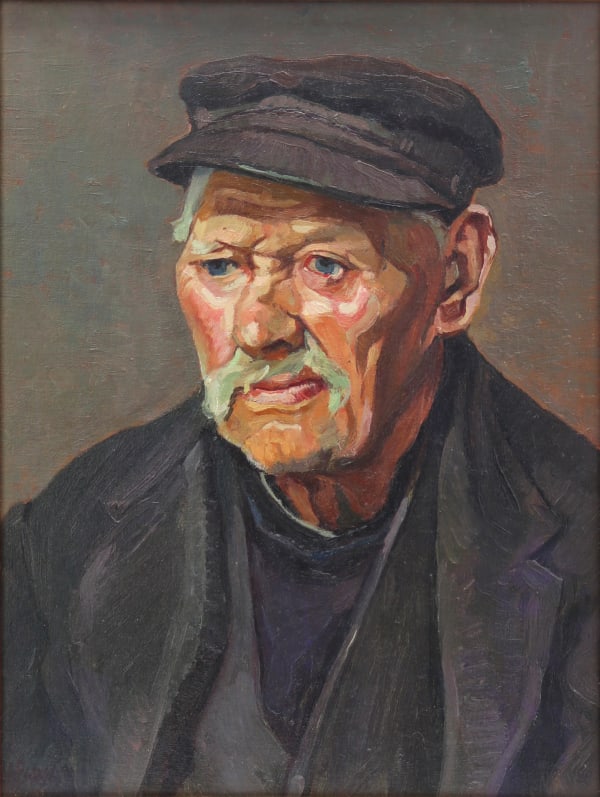
Frank Bramley - Tamping his pipe, in its C19th Watts frame

Frank Bramley - Tamping his pipe - detail
Frank Bramley 1857-1915
Framed 59.5 x 51.8cm (23 1/2 x 20 1/2 ins.)
Further images
Provenance
The estate of US collector Leon Zielinski, Macomb County, Michigan, USA. DuMouchelle Art Galleries, 1993.
Webberley Galleries, London.
The same year that he painted Tamping his pipe, 1886, Bramley had also completed one of his most famous works, Domino, again executed very overtly with the dragged straight marks of the square brush technique. Tom Cross provides a wonderful description of this technique; “Each change of colour was first carefully mixed on the palette and judged in relation to the surrounding tone and colour of the subject. It was then laid on the canvas to facet the change of light on dress, wall or table.” Despite its square brush technique, disparaging labelled ‘the French method’ by much of the English art establishment, Domino was exhibited at the Royal Academy in 1886 and was a hailed an innovative translation of the new forms of realism into an indoor setting, and the first major interior scene to have emerged from the Newlyn School.
Tamping his pipe is another fine example of the square brush technique and the very considerable talent of Frank Bramley; arguably the Newlyn School’s most gifted artist who in the mid-1880s was at the height of his powers.
-
 Frank BramleyFemme avec châle, 1881-82Oil on canvas61 x 51 cm (24 x 20 ins.)Sold
Frank BramleyFemme avec châle, 1881-82Oil on canvas61 x 51 cm (24 x 20 ins.)Sold
Framed: 81.3 x 73 cm (32 x 28 3/4 ins.) -
 Walter LangleyThe News, Newlyn Harbour, 1903Watercolour and body colour on paper59.5 x 43.8 cm (23 1/2 x 17 1/4 ins)
Walter LangleyThe News, Newlyn Harbour, 1903Watercolour and body colour on paper59.5 x 43.8 cm (23 1/2 x 17 1/4 ins)
Framed: 82.5 x 66.7 cm (32 1/2 x 26 1/4 ins) -
 Frank RichardsFisherman Reading, 1890Oil on canvas101.6 x 76.2 cm (40 x 30 ins)
Frank RichardsFisherman Reading, 1890Oil on canvas101.6 x 76.2 cm (40 x 30 ins)
Framed: 123.8 x 99.1 cm (48 3/4 x 39 ins) -
 John Anthony ParkSt Ives Fisherman, 1929Oil on canvas44.5 cm x 34.5 cm (17.5 x 13.6 ins.)
John Anthony ParkSt Ives Fisherman, 1929Oil on canvas44.5 cm x 34.5 cm (17.5 x 13.6 ins.)
Framed: 59 x 48.7 cm (23.2 x 19.2 ins.)


